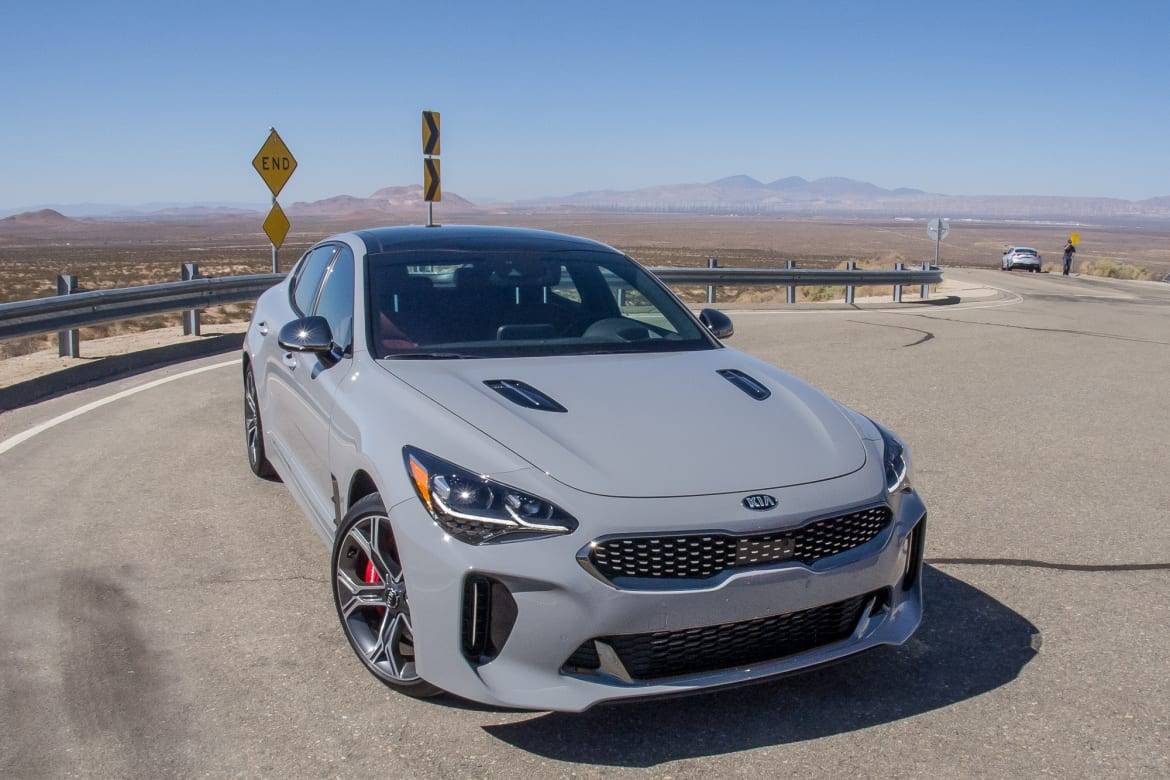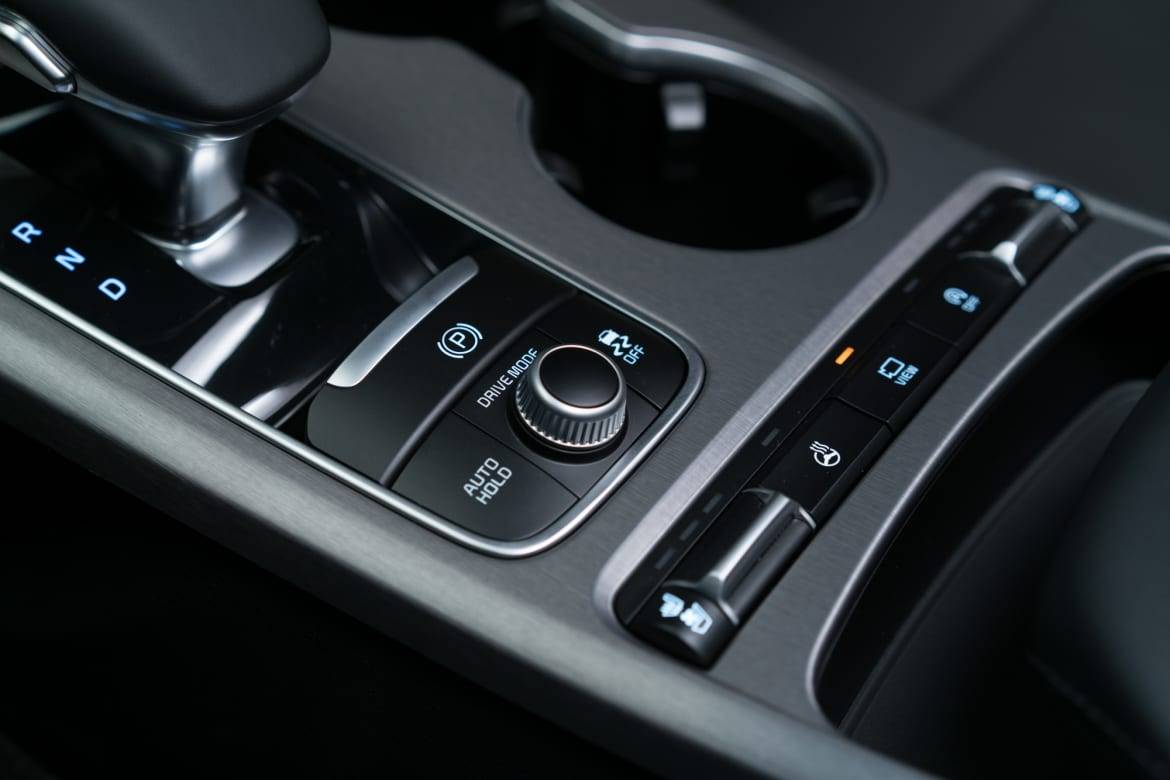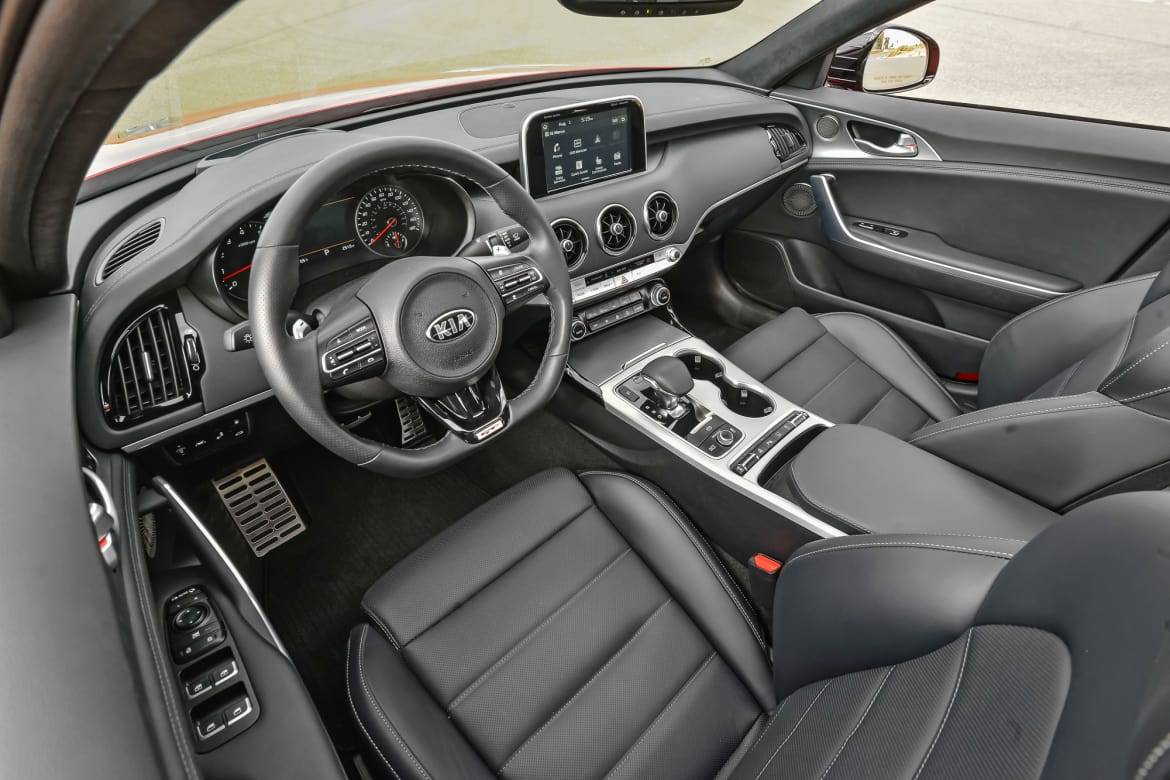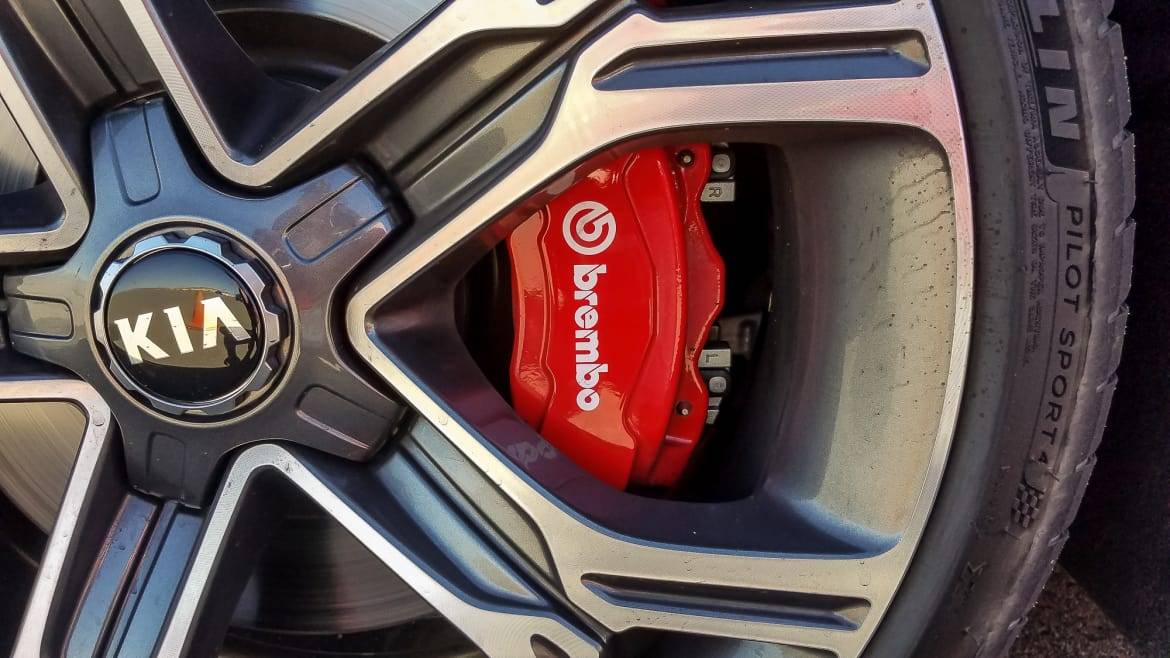2018 Kia Stinger and Stinger GT: First Drive


CARS.COM — The 2018 Kia Stinger has caused a stir since its introduction at the 2017 North American International Auto Show. Cars.com was among the first to see if the car lives up to the looks, the specs and the hype.
- ${price_badge()}
- ${battery_badge()}${ev_report_link()}
- ${hot_car_badge()}
- ${award_badge()}
- ${cpo_badge()}
${price_badge_description}
The EV Battery Rating is based on this vehicle's current expected range relative to the vehicles expected range when new. ${battery_badge_text}
Certified cars are manufacturer warrantied and typically go through a rigorous multi-point inspection.
This car is likely to sell soon based on the price, features, and condition.
${award_blurb}
${award_two_blurb}
Shop the 2018 Kia Stinger near you

I drove the most potent twin-turbocharged V-6 Stinger GT on streets and canyon roads in and around Los Angeles as well as on a closed road course and autocross at the Hyundai-Kia Motors California Proving Ground at a Kia-hosted launch. (Per our ethics policy, Cars.com pays for its airfare and lodging at such events.) I also put some street miles on the less powerful turbocharged four-cylinder base Stinger for comparison. All were pre-production cars. The final products will hit dealerships in December.

Many Were Stung
It’s always a trip to be among the first to drive a distinctive new car in public, and the Stinger got its share of thumbs up, waves and smiles — and one guy in a Subaru WRX STI exhibited all three and recorded a good deal of smartphone video over the course of more than 10 freeway miles. (The reality TV life is not for me.) Cars always look different out in the real world, but the Stinger fortunately still looks good. The only criticism among some viewers involves the hood vents, which aren’t functional like the ones in front of and behind the front wheels. Performance fans are snottier about such affectations than are buyers of more modest vehicles. My guess is the designers saw the need to break up the hood visually, and it would appear more expansive than critics imagine without them. Maybe they could be body-colored instead of black …
Stinger GT
The GT drivetrain performs nicely enough, a twin-turbocharged 3.3-liter V-6 delivering 365 horsepower and 376 pounds-feet of torque at 1,300-4,500 rpm to the rear or all four wheels. An eight-speed automatic is the sole transmission. After earlier estimating the zero-to-62-mph time at 5.1 seconds, Kia has now revised the estimate to a zero-to-60 time of 4.7 seconds after about a hundred tweaks, including revised camshaft profiles. Though it’s unquestionably quick, the first couple of seconds are milder, especially if you don’t employ launch control, which Kia says cuts three-tenths of a second.

The combination of a turbocharged engine and only eight forward gears keeps that first moment or two tame. (Nine- and 10-speeds are already proliferating in the market.) This isn’t a case of endless turbo lag as in the earlier days of turbocharging, but you do need to mind your gear and use the standard shift paddles to get the most out of the engine. There are driving modes — Custom, Eco, Sport, Comfort and Smart — selectable via a knob on the center console, but the Sport mode isn’t very aggressive. On the interstate, I found that switching to Sport while cruising would drop the transmission from 8th to 7th, and at lower speeds it might shave two gears; pretty conservative stuff. On the road course, I longed for a second performance-oriented mode that would hold onto low gears and downshift more aggressively when decelerating.
Overall, the conventional torque-converter automatic is well-behaved, reacting quickly to a stab of the accelerator pedal or a flick of the paddles, the latter of which Kia says increases shift speed by 10 percent. It doesn’t seem to shift as fast as the best dual-clutch automatics, but it’s by no means a problem as conventional gearboxes with this many (and more) gears sometimes are.

Kia set us loose on the proving ground’s banked high-speed loop to show off the car’s stability, but it was unnecessary; I’d already noticed en route to the Mojave-based facility how easy it is to exceed speed limits due to the car’s composure and relative quiet. Like many modern turbocharged cars, the Stinger GT is inherently quiet and engine sound is augmented through the stereo to a degree that’s adjustable using the Custom mode.
It’s All About the Handling
Handling is the Stinger’s greatest attribute, and it’s no surprise. Kia’s head of Vehicle Test and High Performance Development was lured away from BMW — and he’s not just some rando from BMW proper. Albert Biermann was vice president of engineering at the M Performance division. So can the Stinger GT keep up with a BMW? Absolutely — not an M version, but it’s unquestionably in the same ballpark as BMWs and other luxury performance sedans and hatches.

My impressions are based overwhelmingly on the Stinger GT2, the highest trim level, equipped with all options, including adaptive shock absorbers, 19-inch wheels, summer performance tires and — in the rear-wheel-drive versions — a limited-slip rear differential that’s currently available, standard, only on the GT2. Both on canyon roads and the road course, the four-door hatchback proved well-balanced with a slight understeer bias that could easily be countered by applying a little throttle. When the rear-drive version’s tail steps out, it does so gradually and controllably.
The all-wheel-drive Stinger has a similar feel because it sends all torque to the rear wheels absent any slippage. The system can route up to 50 percent of torque to the front wheels when the car is in Comfort mode, but Sport mode limits the forward shift to 20 percent. My impression was that the Sport setting gave the GT AWD a more consistent feel during spirited driving, because sometimes too much torque transfer can unsettle a car, but I’d have to spend more time experimenting to draw firm conclusions and determine if the Sport mode translates to faster speeds as well.

Even in the serpentine section of the autocross course, the Stinger GT managed its body motions well. Again, Sport mode helped quell body roll, but it bears noting that the difference in straight-line ride quality between Comfort and Sport is pretty mild. You can easily drive all the time in Sport if you don’t mind a little more high-frequency vibration on rougher roads — and decreased efficiency. Comfort mode is as advertised.
Though changing driving modes has a mild effect on the drivetrain and ride quality, it’s noticeable in the steering. The electric power assist backs way off in Sport mode and to excellent effect, resulting in progressive torque buildup as you turn away from center. Precision and feedback are very good. Electric power assist is finally finding its way.

Base Stinger
I didn’t expect to like the regular Stinger as much as I did. It’s powered by a 2.0-liter four-cylinder with a twin-scroll turbocharger, rated at 255 hp and 260 pounds-feet of torque at 1,400-4,000 rpm, and it’s not bad at all. Kia says 60 mph comes in just 5.9 seconds, and the standard transmission’s shorter 1st and 2nd gears keep it from feeling too much softer than the GT off the line. It sounds a little buzzier, but it does its job well. The transmission was just as responsive as the GT’s.
The Stinger had conventional shock absorbers, but the ride was pretty impressive — firmer than the GT’s Comfort mode, but well-controlled and appropriate for the car’s character. The Stinger’s relatively long wheelbase and wide track seem to lend a fundamental stability that allows the suspensions to be tuned just so. I didn’t have the opportunity to push the Stinger too hard, but body roll didn’t seem out of the norm. Unlike the GT, which has a variable-ratio steering rack, the Stinger has a constant ratio. On street duty it felt fine, but I’d need more exposure to compare it with the GT.

It’s the Stinger’s standard brakes that surprised me most. Where the GT has red Brembo four-piston front and two-piston rear calipers, the standard calipers are single-piston all around — plain variety — gripping rotors that are about an inch smaller in diameter. Even so, they felt as strong or stronger in normal driving. I gave the Brembos a real workout, and they seemed highly fade-resistant, which is important in any sporty car, particularly one that relies on brake-based torque vectoring as the GT AWD does. Overall, I’d characterize the Brembo system’s strength, linearity and pedal feel as good but not exceptional. For what they are, the standard binders looked sizable and felt strong.
Once we get some more time in the Stinger, we’ll publish a full review addressing the interior, features and much more. There’s no question in my mind that the Stinger is a performer. It reminds me of the original Hyundai Genesis, which we named Cars.com’s Best of 2009 in the award’s inaugural year. Like the Genesis, which was every bit a luxury car for people who aren’t hung up on the brand name, the Stinger is a performer that will reward any driver who’s not hung up on brand names and history.


Former Executive Editor Joe Wiesenfelder, a Cars.com launch veteran, led the car evaluation effort. He owns a 1984 Mercedes 300D and a 2002 Mazda Miata SE.
Featured stories




